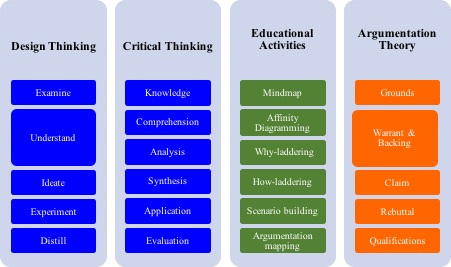Stop Trying to Turn Marketers into Design Thinkers
Instead, help them understand and appreciate designers’ thought-worlds
Janneke Blijlevens, author of “Educating Marketing Students to Understand Designers’ Thought-Worlds,” published in the Journal of Marketing Education, offers advice on approaches to teaching design thinking.
Successful collaboration between marketers and designers is essential for innovation. However, collaboration between these disciplines in innovation teams is often impaired due to the different thought-worlds that drive decision making: rational versus intuitive. A way to facilitate collaboration of marketing and design is through teaching both disciplines about the others’ ways of thinking. Consequently, design thinking has widely been implemented into business curricula and marketing programs specifically (e.g., Stanford University, INSEAD). Courses that teach design thinking to marketing students often focus on these students themselves becoming more creative, intuitive and innovative. However, the integration of the two disciplines in innovation teams, does not require that marketers become designers, and vice versa, as both bring unique skills necessary for successful innovation.

My article presents an educational framework to teach marketing students an understanding of the thought world of design thinking. Essentially, it teaches students to recognize how the others’ approach to the same goals (i.e. customer satisfaction) are complementary and an extension to their own approaches, rather than teaching them to become design thinkers.
This approach to teaching design thinking is unique in two ways.
First, while most new educational frameworks will see preparing students for the workforce as the ultimate goal, it is different in its premise from most other courses. It is not asking students to adopt and internalize a way of thinking, a mind-set, or a new skill. Instead, the intention is that when these students graduate and find themselves working in interdisciplinary innovation teams, with people who approach problems from a different perspective and who use different approaches to tackle these problems (i.e. like designers), they are able to appreciate and understand these unique contributions as complementary to their own. Ultimately, we would expect better innovation results within the teams that these graduates have been employed into.
Second, this framework is unique in the sense that it does not present and teach design (divergent, intuitive, generative) thinking as the complete opposite to critical (rational, objective, and linear) thinking, the marketing student’s dominant thinking style. While design thinking and critical thinking seem worlds apart, the thinking is structured through phases that well align in its goals. For example, the ‘knowledge’ phase in critical thinking and the ‘examine’ phase in design thinking both aim to gather information and knowledge; however the approach to that goal differs between the thinking styles (one would run a survey, the other would take an ethnographic approach). The educational framework harnesses these similarities in goals and process as a scaffold to help students gain an understanding of design thinking. Activities are designed such that a student progresses through the design thinking phases, just like they normally would through the critical thinking phases, but the thinking that is encouraged and experienced is that of a design.
Indeed my data shows that this alignment of design thinking with critical thinking helps students to understand how a design thinking approach is valuable during the innovation process and is complementary to what they are typically used to doing.






























































































